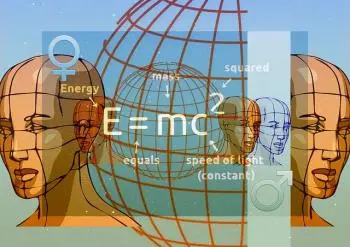
Relativistic physics is a branch of modern physics that revolutionized our understanding of the universe. This theory, primarily developed by Albert Einstein in the early 20th century, has become a cornerstone of modern physics.
In this article, we will explain what relativistic physics is, its fields of study, a little history and some examples that will illustrate its fundamental concepts.
What is relativistic physics?
Relativistic physics is a theory that focuses on understanding the behavior of objects that move at speeds close to the speed of light, as well as gravitational interactions within the framework of the theory of relativity. It is mainly made up of two theories:
-
The theory of special relativity
-
The theory of general relativity
1. Theory of Special Relativity (TRE)
The principle of special relativity, formulated by Albert Einstein in 1905, states that the laws of physics are the same for all observers moving at constant, uniform speeds, regardless of the speed at which they are traveling.
Furthermore, it introduces the constancy of the speed of light in a vacuum as an absolute upper limit of speed in the universe. This means that no particle with mass can reach or exceed the speed of light.
The principle of special relativity revolutionized our understanding of physics by unifying space and time into an entity called space-time and giving rise to the famous equation E=mc2, which relates energy and mass.
2. Theory of General Relativity (GTR)
 Developed by Einstein in 1915, the theory of general relativity expands ERT to include gravity. This theory describes gravity as a curvature of space-time caused by the presence of mass and energy.
Developed by Einstein in 1915, the theory of general relativity expands ERT to include gravity. This theory describes gravity as a curvature of space-time caused by the presence of mass and energy.
The theory of general relativity predicts that massive objects, such as planets and stars, warp space-time around them.
Fields of study in relativistic physics
Relativistic physics covers a wide range of fields of study. Some of the most notable fields include:
1. Relativistic cosmology
This branch focuses on understanding the structure and evolution of the universe on a large scale. The TRG is essential in cosmology, as it provides the basis for models of the expansion of the universe, the formation of galaxies and the existence of black holes.
2. Relativity of particles
It deals with the study of subatomic particles and their behavior at relativistic speeds.
High-energy particle collisions, such as those that occur in particle accelerators such as the LHC (Large Hadron Collider), are an important example of this area of research.
3. Relativistic astrodynamics
This discipline focuses on the orbit and movement of celestial objects, taking into account relativistic effects. Satellite navigation systems, such as GPS, must take relativity into account to provide accurate position measurements.
4. Black holes and neutron stars
This branch studies extremely dense and massive objects, where relativistic effects are dominant.
The prediction and observation of black holes and neutron stars have revolutionized our understanding of the universe.
Examples of relativistic physics
To better understand relativistic physics, let's look at some examples:
Nuclear energy
The equation E=mc² and the principles of the Theory of Special Relativity provide a solid theoretical basis for understanding how nuclear energy is released from the conversion of mass into energy.
This relationship is essential to understand the underlying physics behind nuclear energy and its application for both peaceful (electricity generation in nuclear power plants, nuclear medicine, etc.) and military purposes.
Relativistic Doppler effect
When a light source moves toward an observer, the light waves are compressed, resulting in a blue shift in the spectrum. As the source moves away, the waves stretch, producing a red shift.
This phenomenon is known as the relativistic Doppler effect and is used to measure velocities of astronomical objects.
Length contraction
According to the theory of special relativity, when an object moves at speeds close to the speed of light, its length in the direction of motion contracts in the direction of motion.
This is known as relativistic length contraction and is a direct consequence of the theory.
Time dilation
Relativistic time dilation is another important effect. When an object moves at relativistic speeds, it experiences a slowdown in time compared to an observer at rest.
This has been confirmed experimentally and is an essential component of GPS navigation systems.
Black holes
Black holes are regions of space-time where gravity is so intense that nothing can escape its pull, not even light. The theory of special relativity predicts the formation of black holes and describes their behavior.
Recent observation of black holes through gravitational waves has confirmed these predictions.